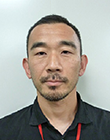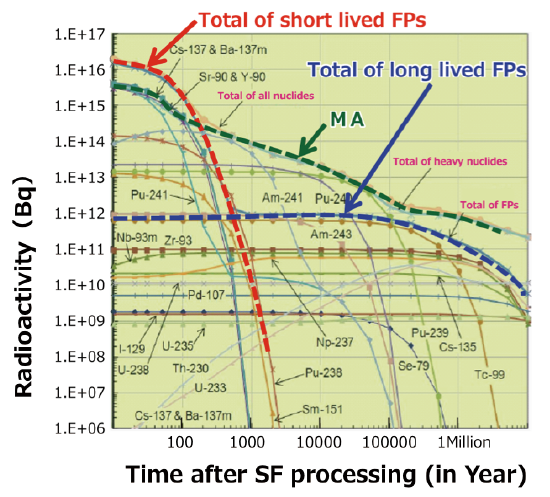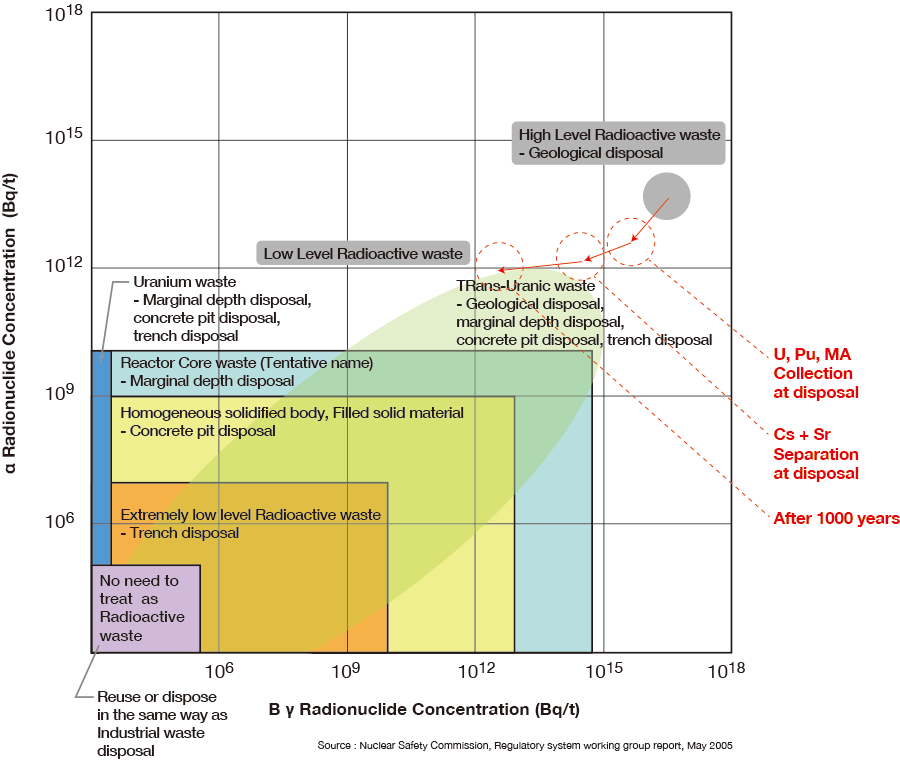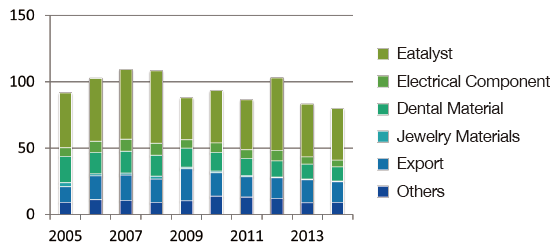

Reduction and Resource Recycling of
High-level Radioactive Waste
through Nuclear Transmutation
Project 5
[Scenario and Process Concept]
Materialize a Scenario for LLFP Separation and Conversion and Study the Process Concept.

Project leader
Kazufumi Tsujimoto
Affiliation: Partitioning and Transmutation Technology Division
Nuclear Science and Engineering Center
Japan Atomic Energy Agency
Division Head
Research Field: Reactor physics, Transmutation system
Scenario and Process Concept
Purpose: To materialize a scenario for LLFP separation and conversion and to study the process concept.
- Study on scenario of LLFP separation / conversion
- Process concept study
Study of the transmutation process concept
Materialization of the separation / conversion system and evaluation of approximate cost

Current Results
Introduction of Research Results
High Level Waste (HLW)→TRU waste disposal Study of scenario (including marginal depth disposal)

Evaluation of radiation exposure dose accompanying reusing LLFP and study of clearance level
With the final goal of setting the clearance level for zirconium (Zr) and palladium (Pd) for which reuse is assumed from the viewpoint of evaluation of exposure dose accompanying the reuse of long-lived fission products. Study the production / usage situation of these elements and their behaviors in the environment with the aim of obtaining parameters necessary for setting clearance levels.
Using palladium metal as a resource
Used for catalysts for purifying the exhaust gas of automobiles, dental materials, jewelry, etc.
Automobile exhaust gas catalysts - Approximately 60%
Petrochemical use catalysts - Nearly 100%
Electric and electronic industry parts - High purity scrap is recovered by precious metal dealers and low purity scrap is recovered together with other precious metals at copper and lead refining plants
Recycled dental materials - nearly all recycled





